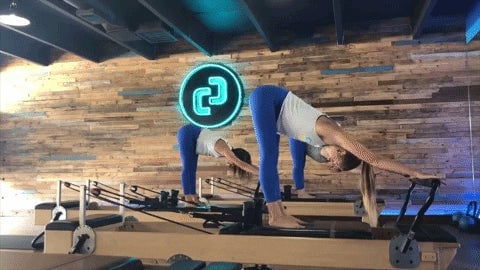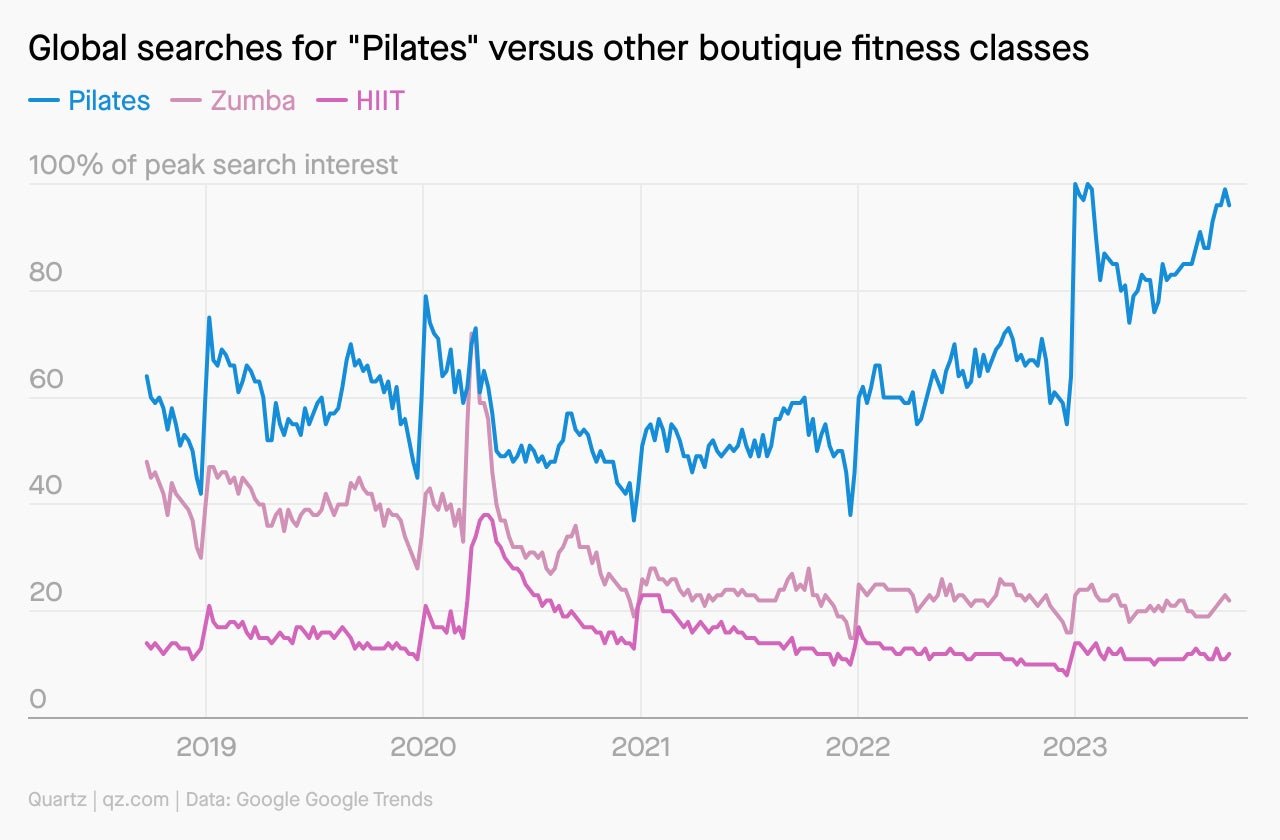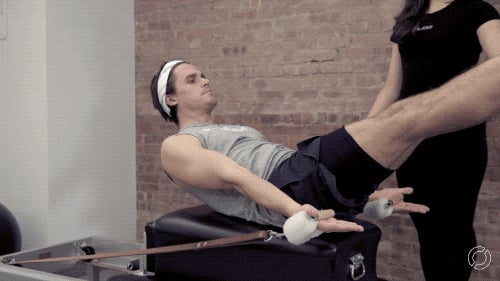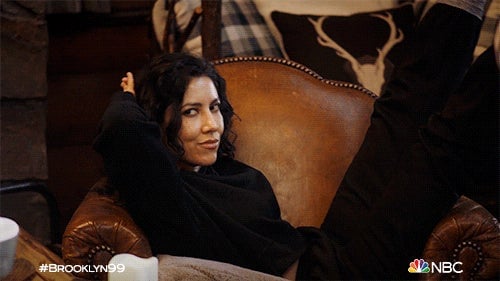Pilates: Bent back into fashion
Why Pilates is making a comeback

Move over Barry’s
Suggested Reading
In 2015, a New York Magazine article argued that Pilates had failed to stand out from the growing crowd of boutique fitness classes—CrossFit, rowing, cycling, HIIT, barre, yoga—going so far as to label its fall as “Pilatespocalypse.” Critics told the writer that part of the problem was with Pilates itself—it’s too quiet, too antisocial, and too critical—and, with traditional Pilates in particular, doesn’t produce enough sweat.
Related Content
But the Pilates downturn may be over. Club Pilates, the biggest Pilates studio in the US, has grown rapidly from 150 studios in 2016 to over 800 globally. Google Trends data shows that search queries for “Pilates” are at an all-time high, and the gap between searches for Pilates and HIIT or Zumba is wider than ever. The exercise has also inspired a slew of Pilates-type workout studios, such as Solidcore and Lagree Fitness, which focuses more on strength training. How has Pilates elevated itself to be more than just a fad, compared to—dare we say it?—Zumba?
Let’s glide on through this email to find out.
By the digits
$4,400: Price of a classical studio reformer, which is a Pilates machine equipped with springs, a sliding carriage, ropes, and pulleys
$30 to $60: Typical price of a small group class using Pilates equipment and personally tailored exercises
$60 to $150: Price of a private Pilates session
~500: Hours of training needed to be a certified Pilates instructor
$5,000: Starting price of a comprehensive Pilates training program
45 minutes to 1 hour: Typical length of a Pilates class
200+: Pilates influencers on Instagram, according to the Pilates Education Institute
Explain it like I’m 5!
How does Pilates work?
One misconception about Pilates is that it will help you build stronger muscles or carve out a six-pack. But that’s not exactly true; it’s more that Pilates is really good at helping someone who is already very physically fit maintain a strong body.
According to the Pilates Method Alliance (PMA), a nonprofit professional organization, Pilates is a “method of exercise and physical movement designed to stretch, strengthen, and balance the body.” The Pilates method, according to PMA, is a systematic practice of specific exercises that come with focused breathing exercises; the method is suitable on its own but also pairs well with professional sports training and physical rehabilitation.
In mat Pilates, which came before the method’s equipment was developed, founder Joseph Pilates developed a system where you start with your back on the mat since (it’s easier that way), then progress from lying to seated to standing. “Reformer” Pilates uses machines and springs to provide a more dynamic session. Classes may involve a range of furniture-resembling apparatuses invented by Joseph Pilates that bear cool-ish names like the Reformer and Wunda Chair.
Studies show that Pilates can improve abdominal endurance and hamstring flexibility as well as reduce body pain.
Charted

Million-dollar question
What’s driving the Pilates comeback?
Pilates has become more accessible. Studios have adapted a more contemporary practice that is not focused on a systemic order of moves as in classical Pilates, and there’s more of a focus on meeting you where you are, Abby Phelps, a Chicago-based Club Pilates franchise owner, told Quartz. Those changes appeal to a wider group of people. Studios have also been moving from private sessions to group-based classes—which also widens access since classes become cheaper. On-demand workout apps like MindBody and ClassPass, where you can pop into a class last minute, help too.
Katie Santos, a Pilates consultant, told Quartz that physical therapists refer their clients to Pilates. Athletes such as LeBron James, Cristiano Ronaldo, and Andy Murray swear by it. NBA pro basketball team the Miami Heat has its own Pilates instructor. That’s pretty hip for a has-been fitness fad.
All the demand though has led to concerns about the quality of classes and finding enough teachers. Training for Pilates is both costly and time-consuming since it can take a whole year to be fully certified, said Santos. Of the 60 studios she consults with, a quarter of the studios tell her they could double the number of instructors, she said.
Quotable
“I’m into taking classes because I want the group energy and I like people telling me what to do.”
— Nicole Mereshensky, a mother of two in New York who takes boutique fitness classes about six times a week.
Pop quiz

Which of the following is NOT a real piece of Pilates equipment?
A. Pilates arm chair
B. Trapeze table
C. Pilates barrel
D. Pontius Pilates stool
You’ll have to stretch wayyy down to the bottom of this email to find out.
Origin story
It’s in the name
During World War I, Joseph Pilates, who was born in Germany, worked at a hospital where he attended to patients who were unable to walk. Pilates came up with the idea of attaching bed springs to the hospital bed to help support the patients’ limbs, leading to the development of a popular piece of Pilates equipment known as the “Cadillac.” Much of his equipment design, though slightly adapted, is in use today in many Pilates studios.
After the war, Pilates and his wife Clara emigrated to the US and opened a “body-conditioning gym” in New York in 1926, which featured apparatuses designed to enhance his rehabilitation work. Dance legends George Balanchine and Martha Graham came through his studio, and Pilates (the method) became a hit with the dance community, as dancers felt it helped their techniques improve and their injury recovery times shorten.
Later on, Pilates wrote two books: Your Health and Return to Life Through Contrology (the original name of Pilates—again, the method, not the man) to pass on his teachings. He died in 1967 at 83, after which Clara continued his work, adapting the Pilates method to suit the individual needs of clients. Her adaptations led to the modern form of Pilates that we shell a lot of money out for today.
Fun fact
In 2000, the US Southern Court of New York ruled pilates as a generic term, like yoga or karate, which keeps anyone from registering the word as a trademark. When Pilates is capitalized, like we did just then, it’s to differentiate practitioners of the original Pilates discipline as opposed to its copycats. But Pilates the man, not the method, is capitalized because it’s a proper noun, and that’s just respectful and correct. Pilates at the beginning of a sentence like you see here could be either one—that’s just English grammar!
Do it with me!
Lie face up, and lift your head, shoulders, and both legs, without letting your back leave the ground. Now, lift your arms up. Pump your arms up and down as you inhale for five counts and exhale for five counts, palms facing down. Repeat this breathing pattern 10 times while holding the position. Squeeze that core!
Congrats you just did a popular Pilates exercise called One Hundred.
Poll

How do you like to work out?
- I put that Jane Fonda tape in and GO!
- I’m a proud gym rat.
- I use laundry detergent as dumbbells.
- I run marathons... of Great British Bake Off.
We promise answering our poll is more like a walk in the park than a plank hold.
💬 Let’s talk!
In last week’s poll about El Niño, 41% of you said you’d blame the weather pattern for missing holidays at home because of snow. 31% of you said you’d blame El Niño if there was a summery halloween, while the rest of you would blame it for high pollen counts and rain on your wedding day.
Today’s email was written by Michelle Cheng (obsessed with Pilates, but not with yoga), edited by Annaliese Griffin (has been obsessed with both HIIT and yoga, but never Pilates), and produced by Morgan Haefner (obsessed with HIIT and reggaetón dance).
The correct answer to the pop quiz is D., Pontius Pilates stool. While the Pilates arm chair is very real, it looks very uncomfortable.